When you can’t follow conversations in a crowded room, or find yourself turning up the TV louder than everyone else, it’s not just aging-it might be sensorineural hearing loss. This isn’t a simple case of earwax buildup or fluid behind the eardrum. It’s damage deep inside your inner ear, where tiny hair cells that turn sound into electrical signals have died off-and they don’t grow back. Unlike conductive hearing loss, which can often be fixed with surgery or medication, sensorineural hearing loss (SNHL) is mostly permanent. And it’s not rare. About 90% of all hearing loss cases that need help are this type.
How Your Inner Ear Turns Sound Into Signals
Inside your cochlea-a spiral-shaped, fluid-filled structure in the inner ear-live about 15,000 microscopic hair cells. These aren’t like the hairs on your head. They’re called stereocilia, and they move with every sound wave that enters your ear. When they bend, they trigger electrical signals that travel up the auditory nerve to your brain. That’s how you hear your child’s laugh, a bird singing, or a car horn. There are two types of these hair cells: inner hair cells (IHCs) and outer hair cells (OHCs). The inner ones send the actual sound signal to your brain. The outer ones act like amplifiers, boosting quiet sounds so you can hear them clearly. In most cases of SNHL, the outer hair cells go first. That’s why people often lose the ability to hear high-pitched sounds-like children’s voices or birds chirping-before they struggle with lower tones. Damage to these cells happens slowly. Exposure to noise louder than 85 decibels for more than 8 hours a day can start the process. That’s about the level of heavy city traffic or a lawnmower. But it doesn’t take years. A single loud concert, a gunshot, or even years of listening to music through headphones at high volume can do the damage. Aging is another major cause. By age 65, about one in four people have noticeable SNHL. By 75, it’s half of all adults.Why It’s Usually Permanent
Unlike skin or liver cells, the hair cells in your inner ear don’t regenerate. Once they’re gone, they’re gone. That’s why most cases of SNHL can’t be cured. Medications, drops, or supplements won’t bring them back. You can’t reverse it with vitamins or herbs. The damage is structural, not chemical. There’s one exception: sudden sensorineural hearing loss (SSHL). This is when hearing drops suddenly-often over a few hours or days. It’s rare, affecting only 5 to 20 people per 100,000 each year. But if caught within 48 to 72 hours, steroid treatments (pills or injections) can help 32% to 65% of people recover some hearing. After two weeks, the chances drop sharply. That’s why anyone who loses hearing suddenly needs to see an ear specialist immediately. For everyone else, SNHL is a lifelong condition. The goal isn’t to fix it-it’s to manage it.What It Feels Like to Live With SNHL
People with SNHL don’t just hear less-they hear differently. Speech sounds muffled, especially in noisy places like restaurants or family gatherings. You might hear someone talking, but you can’t make out the words. This isn’t because they’re mumbling. It’s because your brain isn’t getting the full signal. Another common symptom is recruitment. Sounds that are quiet seem fine, but once they get louder, they suddenly feel painfully loud. A whisper is clear, but a door slamming feels like a bomb going off. This makes it hard to adjust volume on TVs or phones. Tinnitus-ringing, buzzing, or hissing in the ears-is also common. About 80% of people with SNHL experience it. For some, it’s mild. For others, it’s constant and exhausting. Some hearing aids now include built-in sound therapy to mask the ringing, which can reduce the perceived intensity by half in a few months. Dizziness or balance issues can also happen. The inner ear doesn’t just handle hearing-it helps control balance. Damage to the cochlea can sometimes affect the vestibular system too.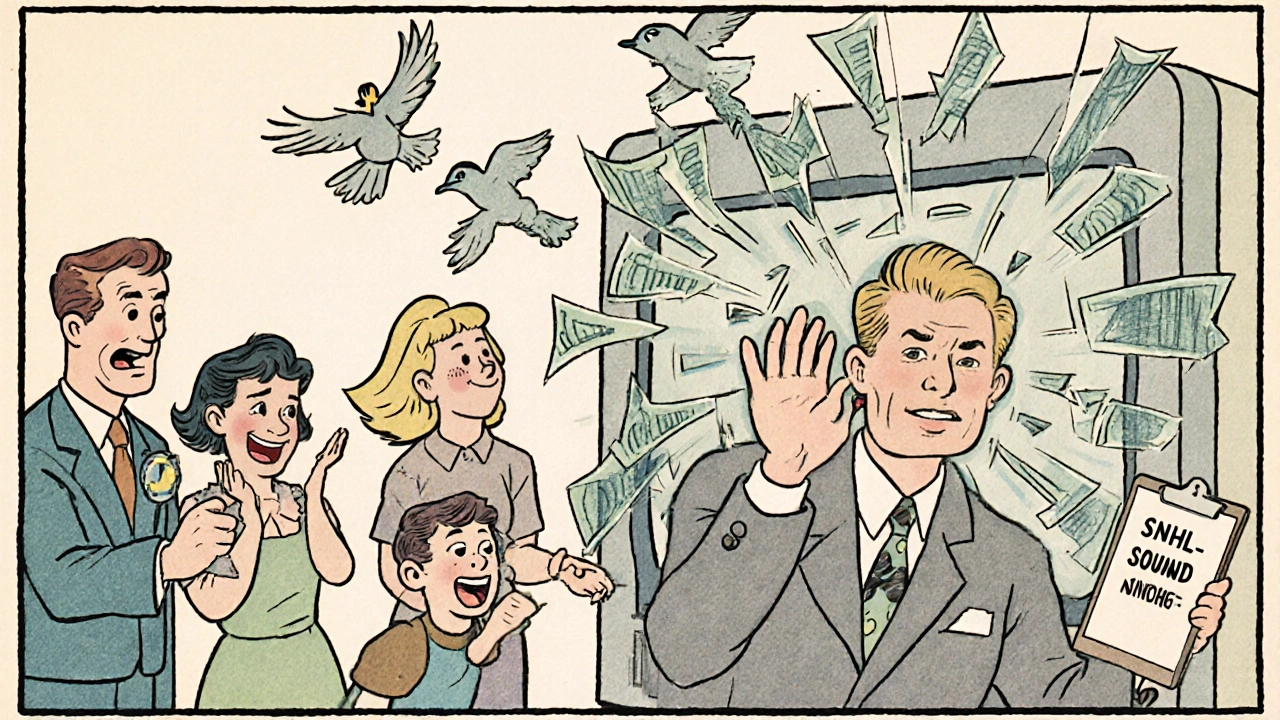
How It’s Diagnosed
You can’t diagnose SNHL by yourself. You need an audiologist. The test is simple: you wear headphones and press a button when you hear tones at different pitches and volumes. This is called an audiogram. In SNHL, the results show that both air conduction (sound traveling through the ear canal) and bone conduction (sound sent directly through the skull) are equally reduced. That’s the key difference from conductive hearing loss, where bone conduction is normal but air conduction is poor. No air-bone gap? That’s SNHL. If your audiogram shows a steep drop in hearing above 2,000 Hz, it’s likely age-related or noise-induced. If the loss is sudden and affects one ear, it’s a medical emergency.Treatment Options: What Actually Works
There’s no cure. But there are tools that help you live better. Hearing aids are the most common solution. Modern digital hearing aids don’t just make everything louder. They’re programmed to boost only the frequencies you’ve lost. If you can’t hear high-pitched voices, the device amplifies those tones while leaving lower ones alone. Brands like Phonak, Widex, and Starkey use AI to separate speech from background noise, making conversations easier in crowded places. But they’re not magic. Most users report only a 30% to 50% improvement in noisy environments. And they’re expensive-$2,500 to $7,000 for a pair without insurance. Some people turn to Costco’s Kirkland Signature models, which cost about half as much and get solid reviews. Others use direct-to-consumer brands like Eargo or Lively, which are easier to buy online but less customizable. For those with severe to profound SNHL-where pure-tone averages exceed 90 dB-cochlear implants are an option. These devices bypass the damaged hair cells entirely. A surgeon implants electrodes into the cochlea, and an external processor sends signals directly to the auditory nerve. About 82% of recipients can understand speech without lip reading after a year of therapy. But the surgery is invasive, and the adjustment period is tough. Many users say everyday sounds-like running water or a dog barking-feel shockingly loud at first. It takes weeks or months for the brain to relearn how to interpret the signals.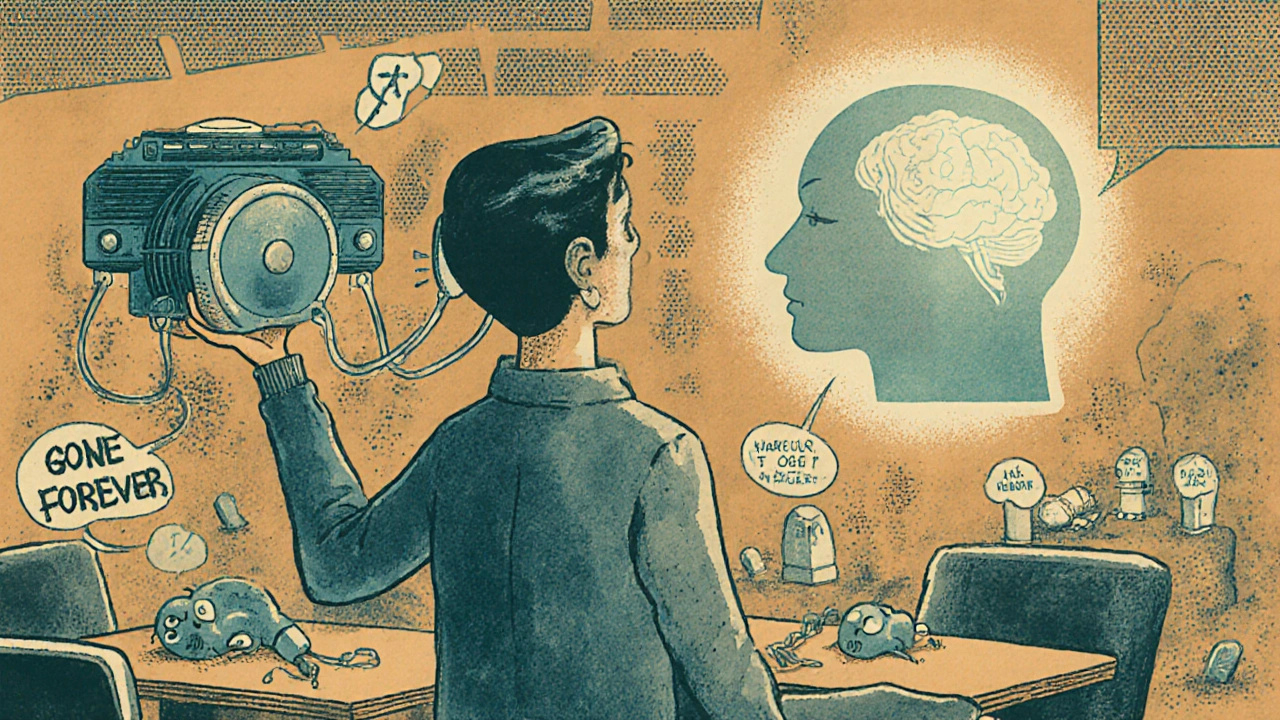
The Real Challenges: Cost, Stigma, and Delay
Despite how common SNHL is, only 16% to 20% of adults in the U.S. who need hearing aids actually use them. Why? Cost is a big reason. Insurance rarely covers them. Medicare doesn’t. Even with financing plans, the price is a barrier. Stigma is another. Many people think hearing aids mean you’re old or weak. But that’s changing. Younger people are wearing them discreetly. Some models are nearly invisible. Others look like stylish earbuds. The biggest problem? Delay. People wait years before getting help. They think it’s just aging. But every year without amplification makes it harder for your brain to understand speech later. The longer you wait, the more your brain forgets how to process sound.What’s Coming Next
Research is moving fast. Stanford and other labs are testing stem cell therapies to regrow hair cells in animals. Early results are promising-but human trials are still 5 to 10 years away. Meanwhile, hearing aid tech is improving. New devices can track your heart rate, detect falls, and even monitor cognitive load. Some can connect directly to your smartphone and adjust settings based on your location. The FDA recently approved the first over-the-counter hearing aids for mild to moderate SNHL, making them more accessible. By 2035, experts predict 95% of people with SNHL will have access to tools that restore meaningful hearing-even if they can’t cure the damage.What You Can Do Now
If you suspect SNHL:- Get a hearing test. It’s quick, painless, and often free at audiology clinics.
- If hearing dropped suddenly-go to an ENT doctor within 72 hours.
- Protect your ears. Use earplugs at concerts, keep headphone volume below 60%, and take breaks from loud noise.
- Try a hearing aid trial. Most providers offer 30 to 90 days to test them at home.
- Join a support group. Organizations like the Hearing Loss Association of America offer free workshops and peer mentoring.
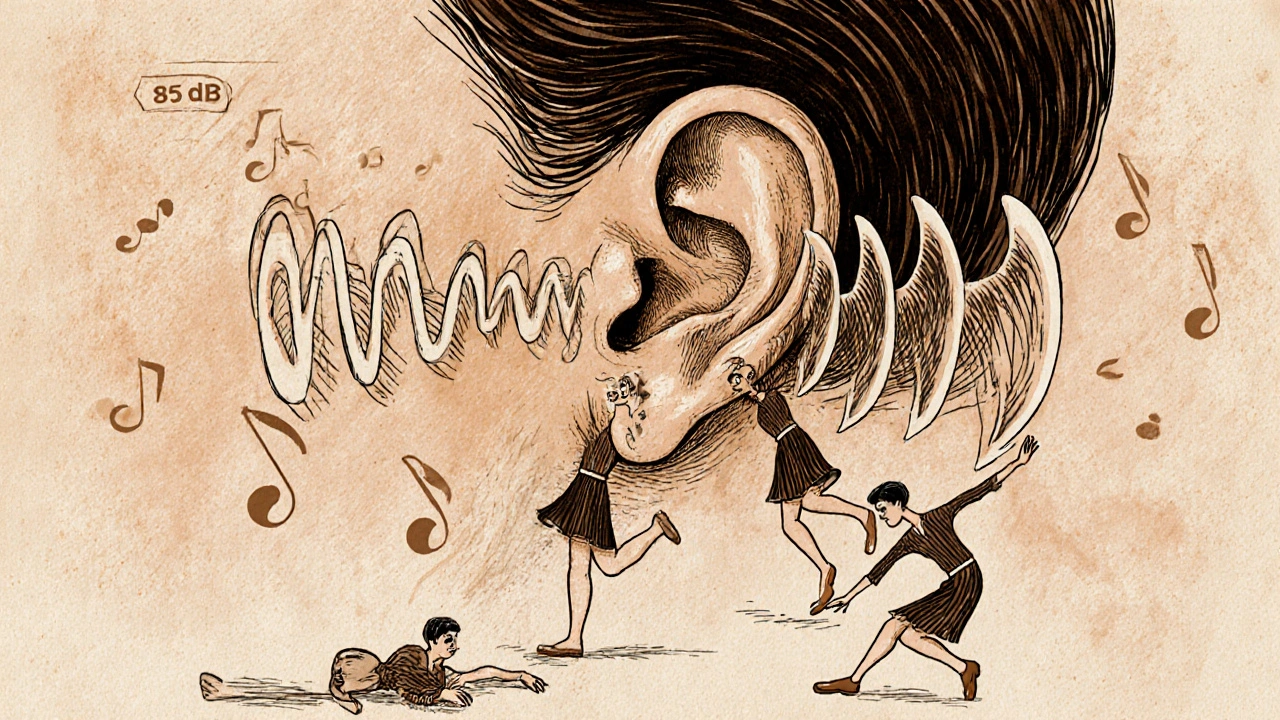

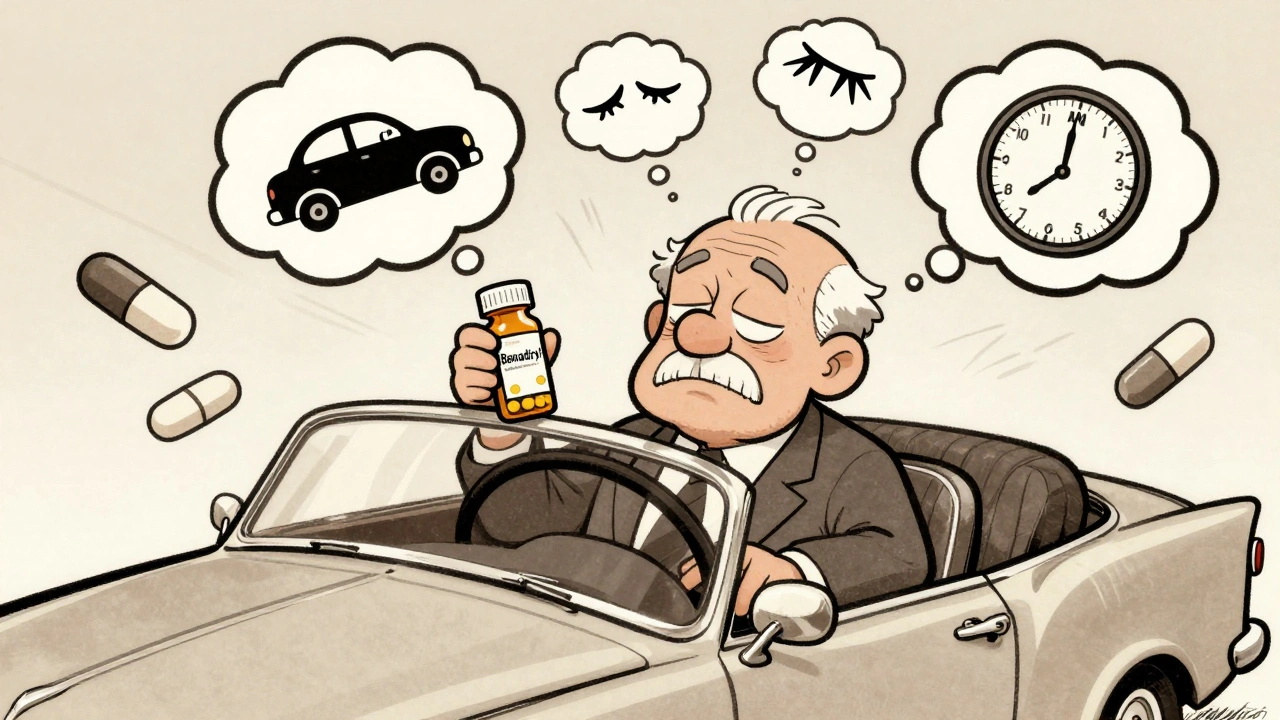

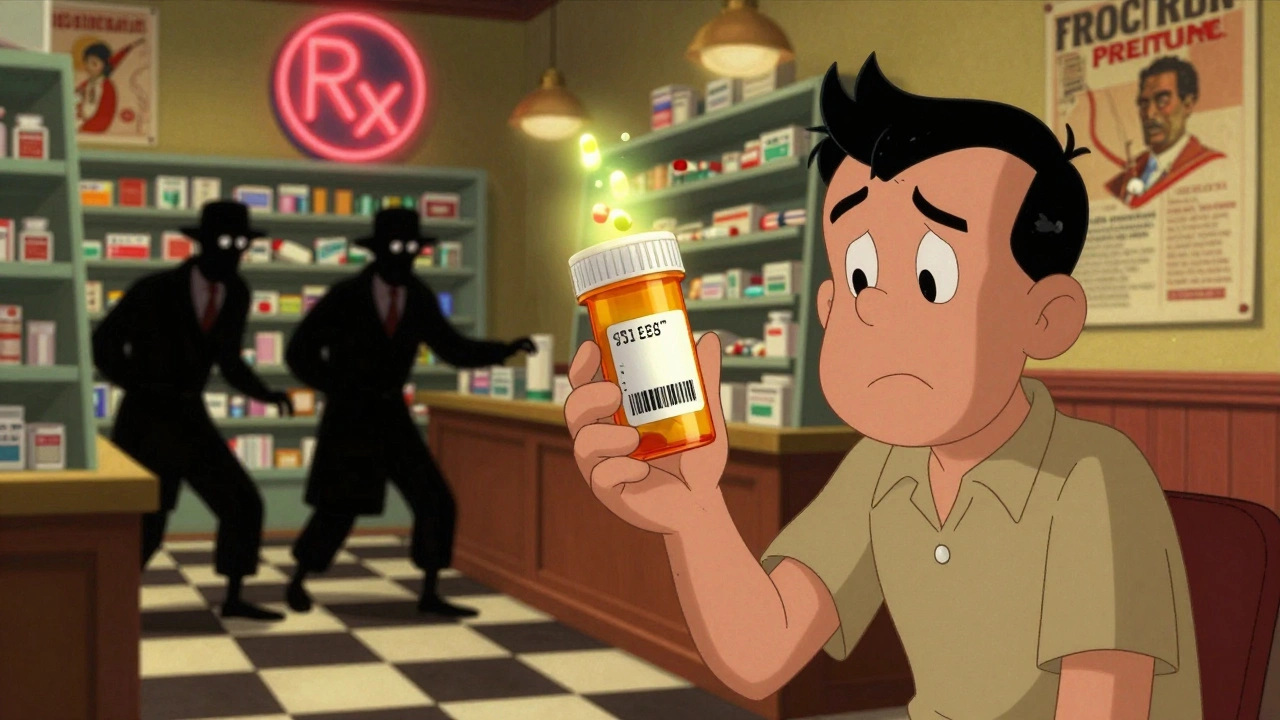
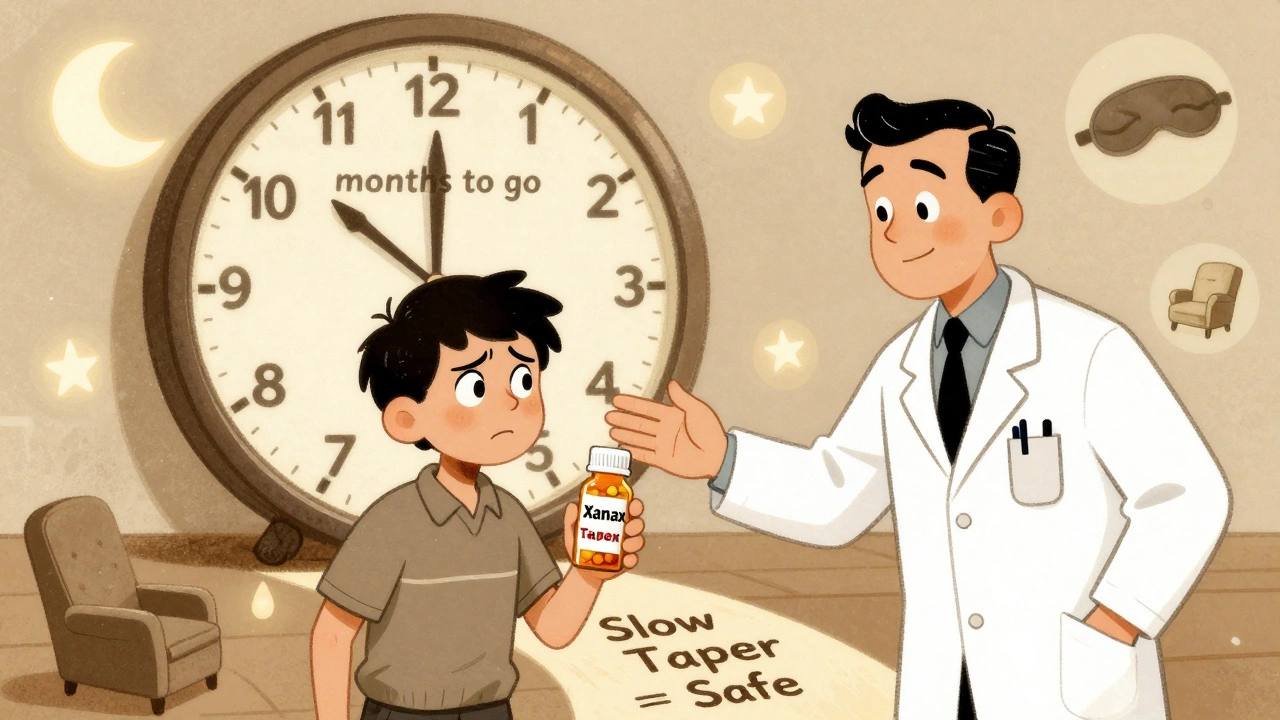
Sarah Swiatek
November 20, 2025 AT 08:00Let me tell you something no one else will: I used to think hearing loss was just about turning up the volume. Then I lost my dad to SNHL and watched him slowly vanish into his own silence. He’d nod along at family dinners, smiling like he got the joke, but his eyes? They were screaming. He stopped going to concerts. Stopped answering calls. Stopped laughing at his own punchlines. The worst part? He waited seven years before getting hearing aids because he thought they made him look ‘old.’ Like aging was a crime. The tech now? It’s mind-blowing. AI that isolates voices, apps that translate speech into text in real time. But none of it matters if you’re too proud to ask for help. We treat hearing loss like a weakness, when it’s really just biology doing its damn thing. And we’re all going to be there one day. So maybe stop judging and start listening. To others. To yourself.
Also, if you’re still using those $7000 hearing aids? You’re being scammed. Costco Kirklands are 80% as good and don’t come with a therapist’s hourly rate attached.
And yes, I’m the one who made my mom get tested. She’s 72. Now she’s back at book club. And she’s reading the tea leaves in the cup like a witch. Which, honestly? Kinda beautiful.
Love you, Dad. Still listening.
- Sarah, who cries every time she hears a bird sing now.
Dave Wooldridge
November 20, 2025 AT 10:14THEY DON’T WANT YOU TO HEAR. That’s why they let the cochlear implants cost $100K. That’s why Medicare won’t cover them. That’s why the FDA approved OTC hearing aids only AFTER Big Pharma realized they couldn’t profit off them anymore. The hair cells don’t regenerate? LIES. The military knew how to regrow them in the 90s. They used it for elite soldiers. Then the Pentagon buried it. Why? Because if everyone could hear perfectly, they’d hear the drones. They’d hear the lies. They’d hear the truth about the 5G towers feeding your brain static. I’ve got a friend who got his hearing back after a Tesla coil treatment. He said the ringing stopped and suddenly he could hear the whispers from the satellite. I’m not joking. They’re using your ears as antennas. And they’re harvesting your thoughts. You think this is about aging? No. It’s about control. You think you’re just losing your hearing? No. You’re being silenced. Wake up. The truth is in the frequencies you can’t hear anymore. And they’re laughing at you.
PS: I’ve got a prototype earplug that blocks 5G. DM me. I’ll send you one. Free. For the truth.
Rebecca Cosenza
November 21, 2025 AT 20:20Stop buying into the ‘hearing aids are expensive’ narrative. You’re choosing to be deaf. If you can afford a new iPhone, you can afford a hearing aid. You’re just lazy. And if you think tinnitus is ‘exhausting’? Try living with chronic pain. Or cancer. Or poverty. People die from things worse than not hearing the birds. Get over yourself.
And no, I don’t care if you ‘feel different.’ You’re not special. Just deaf.
🙂
swatantra kumar
November 21, 2025 AT 23:22Bro, I’m from India and we don’t even have access to this info in most villages. My uncle lost his hearing after working in a textile mill for 30 years. No one told him about noise limits. No one gave him earplugs. Just a paycheck and silence. Now he’s 68 and uses a $50 amplified phone. He can hear his grandkids. That’s all he needs. Hearing aids? In the U.S.? You’re treating a basic human need like a luxury item. Meanwhile, here? We make do. We adapt. We don’t whine about cost. We just survive. And yeah, I’ve got a cousin who got a cochlear implant in Bangalore for $1,200. It works. The tech isn’t the problem. The greed is. 😊
Cinkoon Marketing
November 23, 2025 AT 14:54Actually, you missed the most important point. The real issue isn’t the hair cells-it’s the auditory cortex. Neuroplasticity declines with age, so even if you get a hearing aid, your brain doesn’t rewire properly. That’s why people say ‘I hear but I don’t understand.’ It’s not the ears. It’s the brain forgetting how to decode speech patterns. That’s why early intervention is critical-not because of the ears, but because the brain needs the signal before it atrophies. I’m a neurologist. This isn’t opinion. It’s peer-reviewed. And yes, I’ve seen patients regain 70% of comprehension after 6 months of auditory training with AI-assisted therapy. But no one talks about that. Because hearing aids are easier to sell than rehab programs. 🤷♀️
robert cardy solano
November 25, 2025 AT 06:17Been there. Lost my hearing at 38 after a music festival. Thought I was just tired. Took me two years to get tested. By then, my brain had already started ignoring high frequencies. Got hearing aids. They’re like glasses for your ears. You don’t cry because you need glasses, right? So why cry because you need hearing aids? They’re not a death sentence. They’re a tool. I wear mine. I still go to concerts. I still hear my daughter’s laugh. It’s not perfect. But it’s enough. And honestly? The new ones look like AirPods now. People think I’m just vibing to music. I’m just vibing to life. 🤘
Pawan Jamwal
November 26, 2025 AT 11:11USA thinks it owns hearing tech? Ha! We in India have been making affordable hearing devices since 2010. Your $7000 devices? We make them for $120. You think your ‘AI’ is advanced? We use open-source algorithms on Android phones. Your ‘FDA-approved’ OTCs? We’ve had them since 2018. Your system is broken because you profit from disability. We fix it because we care. Your ‘research’ is just corporate PR. Real science is in the slums of Mumbai, not in Stanford labs with grant money. 🇮🇳
Bill Camp
November 26, 2025 AT 11:46Let me tell you something. I’m a veteran. I got tinnitus from 18 months in Afghanistan. The VA gave me a hearing aid. It made everything louder. Including my own heartbeat. I hate it. I hate the feedback. I hate the way it makes me feel like a robot. I don’t want to hear better. I want to be left alone. My silence is my peace. Don’t tell me to ‘fix’ it. Don’t tell me I’m ‘missing out.’ My ears are my sanctuary. And if you don’t get that, then you don’t get me. And that’s fine. I don’t need your tech. I need my quiet.
- Bill, who doesn’t need to hear the birds to know they’re there.
Lemmy Coco
November 27, 2025 AT 04:48so i got my hearing tested last week and turns out i have mild snhl in my right ear. i was like ‘oh cool’ and then i realized i’ve been turning the tv up for 3 years and thought my wife was just mumbling. i got a pair of earphones from eargo and they’re kinda weird but i can actually hear my dog barking now and that’s wild. i’m not gonna lie i cried a little. not because i’m sad. because i forgot what it felt like to hear the little things. also i keep misspelling things now. sorry. my brain is still catching up.
ps: the dog barked 3 times today. i heard all of them. 🥹
rob lafata
November 28, 2025 AT 12:35Oh sweet Jesus, another one of you. You think this is about ‘aging’? No. It’s about glyphosate. It’s about fluoride in the water. It’s about the 5G towers your phone company installed outside your apartment. You think the hair cells just ‘die’? They’re being poisoned. The FDA knows. The WHO knows. But they’re too busy taking Big Pharma’s money to tell you. You want to know why your hearing’s going? It’s not noise. It’s not age. It’s corporate poison. And you’re drinking it with your tap water. You’re eating it with your bread. You’re breathing it with your air. And now you’re begging for a $5000 hearing aid like a good little consumer. Pathetic. You’re not deaf. You’re drugged. Wake the fuck up. And stop buying into this ‘tech fix’ bullshit. The cure is in the soil. Not in your ear.
Matthew McCraney
November 29, 2025 AT 13:53my wife says i have snhl but i think she’s just mad i don’t hear her when she yells. i’ve been ignoring her for 12 years. she says i’m ‘in denial’. i say i’m in peace. she says i need a hearing aid. i say i need a new wife. the ringing? that’s just her voice echoing in my skull. i don’t need a device. i need a divorce. and yes, i’ve tried the vitamins. nope. nope. nope. and yes, i still turn the tv up. because she’s not worth listening to anyway. 🤷♂️
serge jane
November 30, 2025 AT 01:40There’s something quiet and sacred about hearing loss. Not tragic. Not broken. Just… different. Like learning a new language. You stop chasing the noise. You start listening to the spaces between. The silence isn’t empty. It’s full of things you didn’t know you were missing. The rustle of a curtain. The breath before a laugh. The pause in a song. I lost my hearing slowly. And in losing it, I found a kind of peace I never had when I could hear everything. The world got quieter. But I got deeper. I don’t need to hear the birds to know they’re singing. I feel them in my bones. Maybe that’s the real cure. Not the device. But the surrender.
- Serge, who hasn’t turned on the TV in six months.
Nick Naylor
December 1, 2025 AT 22:15According to the American Academy of Otolaryngology–Head and Neck Surgery (AAO-HNS) Clinical Practice Guideline (2022), sensorineural hearing loss is defined as a permanent, non-conductive, sensorineural auditory deficit characterized by a reduction in both air and bone conduction thresholds without an air-bone gap, with a typical audiometric configuration demonstrating a high-frequency sloping pattern. The primary etiologies include presbycusis, ototoxicity, noise-induced trauma, and genetic predisposition. Cochlear implant candidacy is determined by a pure-tone average >90 dB HL across 500, 1000, and 2000 Hz, with speech recognition scores below 50% in the best-aided condition. The current standard of care includes audiological assessment, auditory rehabilitation, and patient counseling regarding realistic expectations. Over-the-counter hearing aids are classified as Class I devices under FDA 21 CFR 874.4040 and are not intended for severe-to-profound hearing loss. No peer-reviewed evidence supports stem cell regeneration in humans as of Q2 2024. All claims otherwise are speculative and unsupported by clinical trials. End of transmission.
Brianna Groleau
December 2, 2025 AT 06:22I’m from Canada and we have universal healthcare, but hearing aids aren’t covered. I cried when I realized that. My mom’s from Mexico. She didn’t know she had hearing loss until she couldn’t hear her granddaughter say ‘mamá’ for the first time. We flew her here. Got her tested. Got her aids. Now she dances in the kitchen to Bollywood music. She says the music feels like home. I don’t know why we make this so hard. Why do we treat hearing like a luxury? It’s not. It’s connection. It’s love. It’s the sound of someone saying your name. That’s not tech. That’s human. And it’s worth fighting for. 🇨🇦❤️
Rusty Thomas
December 2, 2025 AT 11:14Okay, I’ve been waiting for someone to say this. I’m 29. I’ve had SNHL since I was 16. I got my first hearing aids at 18. I’ve had 4 pairs since. I’ve been to 12 audiologists. I’ve tried every app. Every supplement. Every ‘miracle cure.’ I’ve been called ‘dramatic.’ I’ve been called ‘fake.’ I’ve been told I’m ‘too young.’ I’ve been told I’m ‘not trying hard enough.’ I’ve lost friends. I’ve lost jobs. I’ve lost relationships because I couldn’t hear them say ‘I’m sorry.’ I’m not here for the pity. I’m here because I want someone to say: ‘It’s okay to be broken.’ I’m not fixed. I’m not cured. But I’m still here. And I still hear my dog bark. And that’s enough. For now. 💔🎧